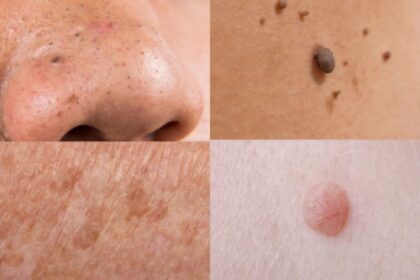Back pain affects millions of people and can disrupt sleep, daily activities, and quality of life. The mattress you sleep on plays a big role in spinal support and alignment, which can help prevent and alleviate back pain. Beyond individual comfort and health, mattresses also have varying impacts on the environment – from materials used to manufacturing processes.
In this article, we’ll highlight the best mattress type for back health that is also eco-friendly. We’ll explain the features that make it ideal for spine support and which environmentally-harmful materials to avoid. We’ll also name a popular mattress to steer clear of due to its negative effects on back pain and the planet.
The goal is to help readers make informed decisions when mattress shopping, keeping their personal health and the health of the environment in mind. High-quality sleep and a cleaner world begin with small, everyday choices. Choosing an ethical, back-friendly mattress is one simple step we can all take.
Healthy & Eco-Friendly Mattress Materials
Many mattress brands now incorporate organic materials like latex, cotton, and wool to make their products more sustainable and environmentally friendly. Organic latex comes from rubber trees and is more breathable than synthetic foam. Organic cotton and wool come from crops and animals raised without pesticides, herbicides, or other chemicals that can be toxic.
These natural materials are renewable, biodegradable, and less hazardous to the environment than synthetic foams and fibers. Organic latex, cotton, and wool provide pressure relief and conforming ability for spinal alignment and back pain prevention. The materials allow airflow to keep sleepers cool as well.
Some mattresses also utilize other organic and recycled materials like coconut husks, flax, and steel coils. Coconut husks offer natural cushioning while remaining firm and supportive. Recycled steel coils provide contouring and minimizes motion transfer between sleep partners.
By choosing an organic mattress made from natural materials, you can benefit your back health while also making an eco-friendly decision. The mattress lasts longer too, saving it from a premature trip to the landfill. Speak with a mattress retailer if you want help selecting a model with healthy, sustainable materials tailored for your sleep position and body type.
Dust Mites Live In Your Mattress
Dust mites are microscopic creatures that feed on dead skin cells shed by humans and pets. They thrive in warm, humid environments with plenty of organic debris to eat, like mattresses. As you sleep, your body heat and moisture create ideal conditions for dust mites to proliferate.
While generally harmless, the waste and particles from dust mites can trigger allergic reactions and asthma in sensitive people. Certain natural materials can help deter dust mites in mattresses:
- Wool – The lanolin found naturally in wool has anti-microbial properties that make it difficult for dust mites to establish colonies. Wool toppers or mattress covers may help.
- Cotton – High-quality cotton is less hospitable to dust mites compared to synthetic fibers. Choose organic cotton for added benefits.
- Latex – The anti-microbial qualities of latex foam prevent the growth of mold, bacteria, and dust mites.
- Coconut coir – The stiff fibers of coconut coir filling are inhospitable environments for mites.
Regular mattress cleaning is also important. Use a hand vacuum with a HEPA filter to remove dust and allergens. Exposure to sunlight also kills dust mites – rotate or air out your mattress periodically. With smart material choices and routine care, you can keep mattress mites at bay.
Worst Mattress Materials For Health & The Environment
- Polyurethane Foam – This petroleum-based foam is used in memory foam and polyfoam. The production process emits volatile organic compounds (VOCs) that can irritate the eyes, nose, and throat. Memory foam also tends to trap heat and contain flame retardants.
- Synthetic Latex – Styrene-butadiene rubber (SBR) is a synthetic latex made from petrochemicals. It off-gases VOCs and is not as breathable as natural latex.
- Chemical Flame Retardants – To meet flammability standards, mattresses contain PBDEs, boric acid, and other concerning flame retardants that can accumulate in the body.
- PVC – The vinyl covering used on some mattresses can contain phthalates, which are endocrine disruptors and may cause reproductive issues.
- Formaldehyde – This known carcinogen is used in adhesives to hold mattress layers together and can be released into indoor air.
The best option is to look for mattresses made with natural materials that have met emissions testing standards, like GREENGUARD Gold or CertiPUR-US. Steer clear of mattresses containing the chemicals and materials described above.
In Conclusion
When it’s time to purchase a new mattress, considering both back health and environmental impact is an important part of the decision making process. The materials and construction quality of your mattress affect both your sleep experience and the planet.
Mattresses made from natural, organic materials like latex, cotton, and wool are ideal options to help properly align the spine and relieve pressure points while sleeping. The breathability and contouring ability of these materials can prevent and alleviate back pain for many individuals.
Additionally, organic mattresses made from materials like latex, cotton, and wool are biodegradable at the end of their 10-15 year lifespan. This prevents the mattress from sitting in a landfill for decades after disposal.
On the other hand, mattresses made from 100% synthetic foams and fibers, chemical flame retardants, toxic adhesives, and PVC covers pose major health risks and environmental hazards. The off-gassing and emissions from these materials contribute to indoor air pollution and respiratory issues in sensitive individuals. These mattresses also break down slower after disposal and leach harmful chemicals into the ground.
Being an informed, eco-conscious consumer and choosing an organic mattress made from renewable materials benefits your back health and the health of the environment. Your new mattress should provide a cool, comfortable sleeping surface tailored to your body type, sleep position, and spinal alignment needs.
The mattress materials should help you wake up feeling refreshed – not in pain or worried about your carbon footprint. By making smart, sustainable mattress purchases, we can all sleep soundly at night knowing we made a decision that supports both personal health and the health of the planet. Sweet dreams!





